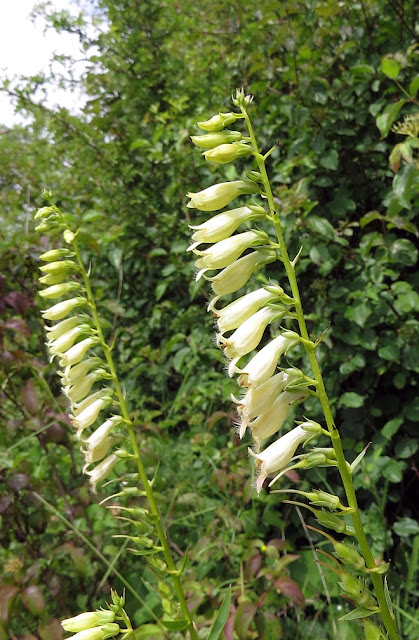We had to go to Winchester earlier this week to help Martha move house (yet again!) and as usual I found time on the way to visit a good site for botanising. This time I chose Portsdown Hill near Portsmouth, where I could easily have spent all day. Fifty hectares of the south face of the hill are a site of
special scientific interest owing to its chalk grassland habitat. I only visited a tiny fraction of it and saw lots of wildflowers and butterflies. I'll definitely be going back soon to have a proper look around. The target species of my flying visit was
Field Cow-wheat -
Melampyrum arvense, a very rare plant in the UK. It was introduced at this site many years ago and is now fully naturalised. I had read recently that it was dwindling in numbers so I was somewhat surprised to see three large groups of it covering quite an extensive area. It was in full flower and looking every bit as spectacular as I'd hoped. Also in the vicinity were a couple of groups of Straw Foxglove - Digitalis lutea naturalised on a roadside verge and a couple of clumps of the striking yellow form of Ivy Broomrape - Orobanche hederae.
One of the large groups of plants.
Some plants were very large like this three stemmed specimen.
Close up they really are stunning.
I've been wanting to see these for years now and am so pleased I finally made the effort to find them.
Field Cow-wheat - Melampyrum arvense.
Straw Foxglove - Digitalis lutea
Ivy Broomrape - Orobanche hederae.












2 comments:
Gorgeous color on the field cow wheat. But what an odd name. Does the flowers last as dried flowers on the field or do they fall off?
Hi Wilma,
The plant is an annual and the whole thing dries up and dies off. I think the name comes from the fact that cattle like to eat it (or possibly that it's only fit for cattle,) It was once a common weed of wheat fields but the black seeds spoilt the flour, making bread black. The scientific name Melampyrum literally means black wheat and over the years modern agriculture as unfortunately all but eradicated it in the UK were it survives at only four sites. It's extremely rare!
I should have written more info in the post but was pushed for time.
Post a Comment